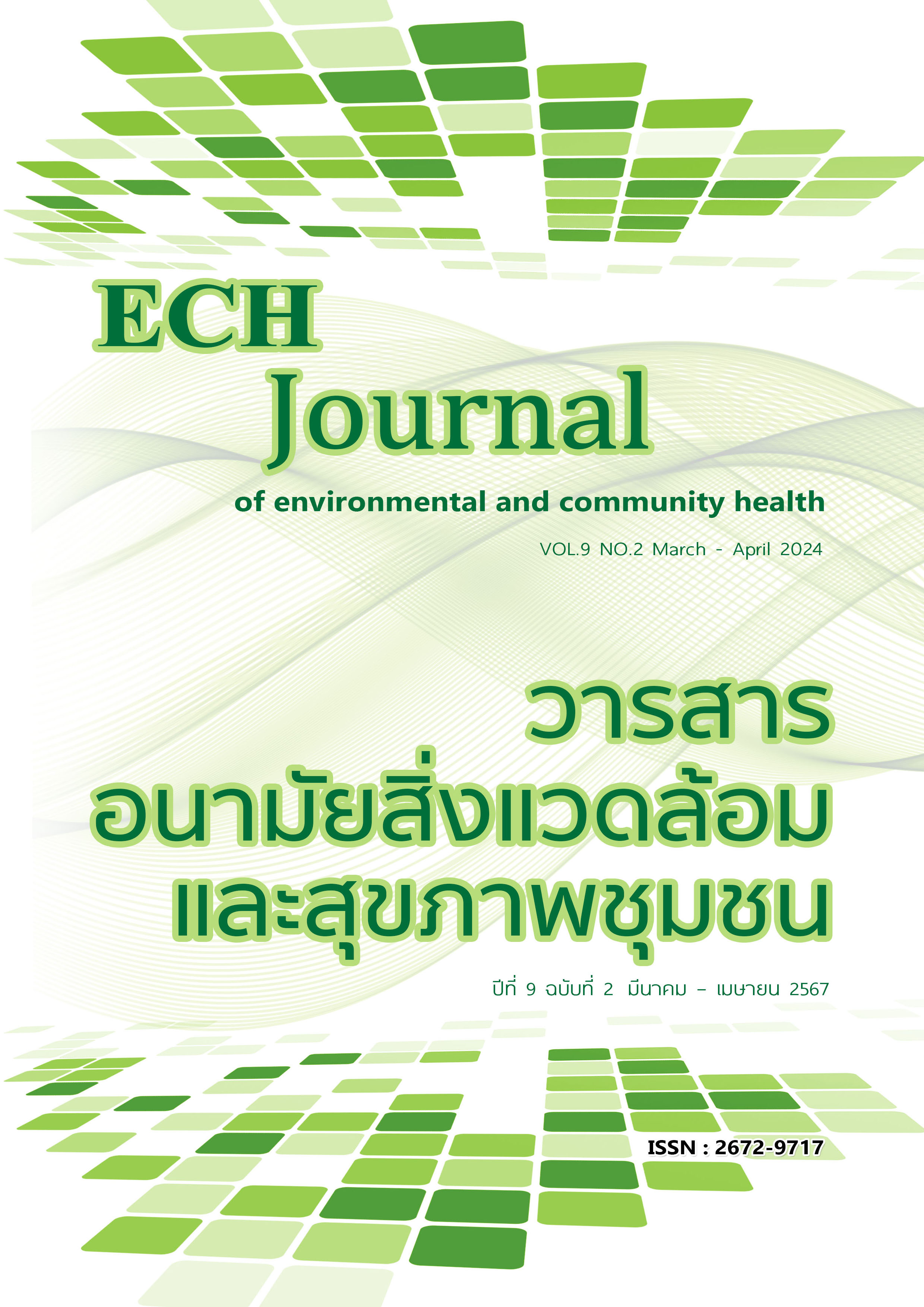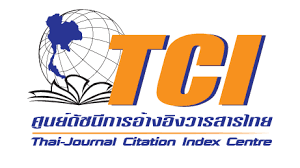A retrospective study on the effect of exercise programs frequency on knee joint range of motion and walking ability in patients after total knee replacement at Lamphun Hospital.
Keywords:
Osteoarthritis, Total knee arthroplasty, Exercise program after knee replacement surgery, Exercise in knee replacement surgery patientsAbstract
This study purposed to investigate the effects exercise programs frequency on knee joint range of motion and walking ability in patients after total knee replacement surgery. The study was conducted from January 2566 to December 2566 at Lamphun Hospital. Data were collected from physical therapy records stored in the hospital's computer system (Phramongkut Software, PMK). The post-operative exercise program consisted of five exercises performed by physical therapists. The variables studied include knee flexion angle, knee extension angle, knee joint movement ability (knee flexion angle ≥ 90 degrees and knee extension angle = 0 degrees), and walking ability according to physician-prescribed weight-bearing patterns (full weight-bearing, partial weight-bearing, and as tolerated). Data were analyzed using the Wilcoxon signed-rank test to compare the differences in knee joint movement angles before and after treatment within each group (p < 0.05). The Kruskal-Wallis test with post-hoc Dunn test was used to compare differences among the groups (p < 0.05). Chi-Square statistics were used to analyze the knee joint movement abilities of each group (p < 0.05). And statistical analysis is used to analyze the walking ability of patients using a walker according to the weight-bearing pattern prescribed by the doctor.
The study divided the sample into three groups: Group 1 (44 participants) received exercise once, Group 2 (111 participants) received exercise twice, and Group 3 (32 participants) received exercise three times. It was found that all groups showed a statistically significant increase in knee flexion angle and knee extension angle after physical therapy treatment (p < 0.05). Patients in Groups 2 and 3 had greater changes in knee flexion angle compared to those in Group 1, with statistical significance (p < 0.05). However, no significant differences were observed in the changes in knee flexion angle between patients in Groups 2 and 3 (p > 0.05). There were no significant differences in the changes in knee extension angle among the groups (p > 0.05). All groups had no significant differences in knee joint movement ability, defined as knee flexion angle ≥ 90 degrees and knee extension angle = 0 degrees (p > 0.05). And all three groups of patients can walk well using a walker according to the weight-bearing pattern prescribed by the doctor, 100 percent.
References
สมาคมรูมาติสซั่มแห่งประเทศไทย. (2553). แนวทางเวชปฏิบัติการรักษาโรคข้อเข่าเสื่อม (Guideline for the Treatment of Osteoarthritis of Knee). https://thairheumatology.org/phocadownload/36/gf_003.pdf
วิชัย อึงพินิจพงศ์, กานดา ชัยภิญโญ และสมรรถชัย จำนงกิจ. (2558). คู่มือการฟื้นฟูผู้สูงอายุหลังการผ่าตัด เปลี่ยนข้อเข่า. สมาคมกายภาพบำบัดแห่งประเทศไทย. พิมพ์ครั้งที่ 1. กรุงเทพฯ. บริษัทสมานมิตรการพิมพ์ 2003 จำกัด. https://pt.or.th/PTCouncil/new_detail.php?id=684
นิลุบล ไชยโกมล. (2563). ผลของโปรแกรมบริหารกล้ามเนื้อและข้อเข่าผู้ป่วยโรคข้อเข่าเสื่อมหลังผ่าตัดเปลี่ยนข้อเข่า. วารสารการแพทย์โรงพยาบาลอุดรธานี, 28(3), 384-396. https://he02.tcithaijo.org/index.php/udhhosmj/article/view/248516/169013
World Health Organization. Osteoarthritis [Internet]. 2023 [cited 2023 Oct 20]. https://www.who.int/news-room/fact-sheets/detail/osteoarthritis.
กิตติศักดิ์ คัมภีระ. (2563). ผลของโปรแกรมส่งเสริมการปรับตนเองต่อความวิตกกังวล การปฏิบัติตัว และสัย การเคลื่อนไหวข้อเข่าของผู้ป่วยที่ได้รับการผ่าตัดเปลี่ยนข้อเข่าเทียม [วิทยานิพนธ์ปริญญามหาบัณฑิต, มหาวิทยาลัยนเรศวร]. https://nuir.lib.nu.ac.th/dspace/bitstream/123456789/1519/3/59060333.pdf
ประชาสัมพันธ์-สำนักงานหลักประกันสุขภาพแห่งชาติ(สปสช.) พรบ. หลักประกันสุขภาพ สิทธิบัตรทอง หน้าหลักข่าวประชาสัมพันธ์ เนื้อข่าว‘สิทธิบัตรทอง’ ผ่าตัดเปลี่ยนข้อเข่าฟรี ยกระดับคุณภาพชีวิตผู้ป่วยข้อเข่าเสื่อม ‘ใช้ชีวิตปกติ-ประกอบอาชีพได้เหมือนเดิม’ สืบค้นวันที่ 28 กุมภาพันธ์ 2567. จาก https://www.nhso.go.th/news/3864
กฤษกมล สิทธิทูล. (2564). การผ่าตัดเปลี่ยนข้อเข่าเทียมทั้งหมด (Total Knee Arthroplasty: TKA/TKR). สมิติเวช. https://www.samitivejhospitals.com/th/article/detail/tka-total-knee-Arthroplasty
ชินภัทร์ จิระวรพงศ์. (2554). การปฏิบัติตามแนวทางการฟื้นฟูสมรรถภาพผู้ป่วยโรคข้อเข่าเสื่อมหลังการผ่าตัดเปลี่ยนข้อเข่าเทียม. เวชศาตร์ฟื้นฟูสาร, 21(3),99-102. https://he01.tci-thaijo.org/index.php/aseanjrm/article/view/42265
กลุ่มงานออร์โธปิดิกส์ โรงพยาบาลลำพูน. (2566). สถิติของกลุ่มงานออร์โธปิดิกส์ โรงพยาบาลลำพูน งบประมาณ 2564–2566.
งานกายภาพบำบัด โรงพยาบาลลำพูน. (2566). สรุปรายงานสถิติของงานกายภาพบำบัด โรงพยาบาลลำพูน งบประมาณ 2564–2566.
พัชริดา กุลครอง. (2564). การออกกำลังกายในผู้ป่วยผ่าตัดเปลี่ยนข้อเข่าเทียม. ศูนย์กายภาพบำบัด คณะายภาพบำบัด มหาวิทยาลัยมหิดล. https://pt.mahidol.ac.th/knowledge/?p=2127
สักกาเดช ลิ้มมหาคุณ. การผ่าตัดเปลี่ยนข้อเข่าเทียม (Knee Arthroplasty). ภาวิชาออร์โทปิดิกส์ คณะพทยศาสตร์ มหาวิทยาลัยเชียงใหม่ สืบค้นวันที่ 28 กุมภาพันธ์ 2567 จาก https://www.med.cmu.ac.th/web/suandok/sick-clinic/knowledge-article-sick-clinic/2097/
งานกายภาพบำบัด โรงพยาบาลลำพูน. (2564). Clinical Practice Guideline of OA Knee of PT.Unit Lamphun Hospital.





